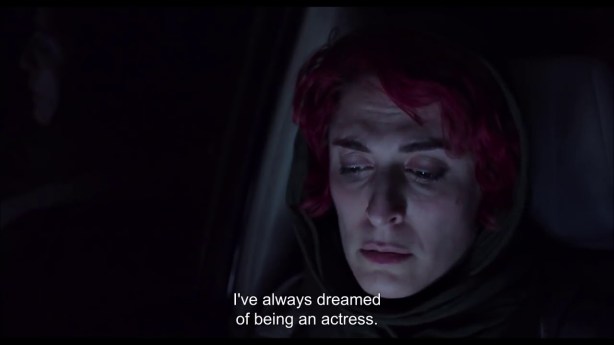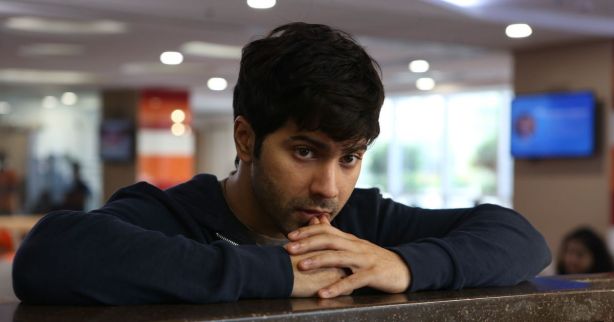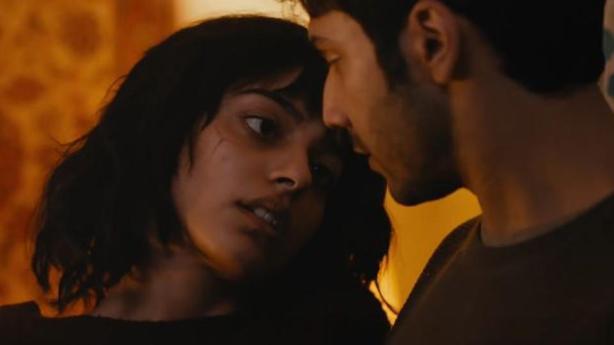New-age urban-liberal-feminist Bollywood is where women’s issues go to die.
Domestic Violence has been ‘dealt with’ in a popular Hindi film last weekend. How Thappad depicts it, what solution it suggests, is now part of the popular imagination. Tick. One more issue has been covered. No other film on this topic will be made for a long time. I think this is why the male dominated industry is now ‘allowing’, facilitating this new wave of ‘women oriented’ films – they are confident of the superficiality with which the issues will be ‘dealt with’. After all, this superficiality is made possible only by the mediocrity that they fathered and propagated.
The trailer promises it to be about You. Who ‘me’? Yes, there are common experiences as women, but surely, the writer is aware that even gendered values are determined by class, caste locations?
Writers’ lack of understanding of political and historical reality, the inadequate representations are often defended by the fraternity from any discourse by saying “This is the story we choose to tell.”
But wait a minute, you have made it for public consumption. You are saying it is the story of Indian women. But, it is Amrita’s story.
Amrita who is constructed as an emotional, vulnerable girl, and presented as a physically attractive, fragile body. A commodified domestic woman created by capitalist patriarchy is copied on to her page by a woman script writer.
Thereby, deleting the ‘inspiration’ part of the project.
This characterization, instead of empowering, makes a woman viewer feel inadequate. Not even one slap. See/this pretty girl does not take shit.
Unlike you.
The film does not show how to resist/protect against/survive violence, but shows that certain women do not have to take even a fraction of what is part of your everyday life.
One has learnt not to question the absence of say, a Muslim woman, or a middle-class working mother, but in a film about a slap – about a violation of physical self – surely one could also see a different kind of body, one not so fragile face?
Films in a popular space cannot shirk from the responsibility of varied representation.
If the film ignores difference, THE OTHER CAN NEVER BE REPRESENTED.
One token subplot – the only way the character and the writer can access the other half- enter, the domestic help!
The writer deigns to take a disdainful look at lower socio-economic class household. A working class couple that performs underpaid hard labour, and has complex, shared, survival strategies to feed their children is not granted any intelligence or grace in their marital intimacy by the film. The violence among the poor is shown as meaningless, crude, repetitive, almost comic as opposed to a one-time, almost accidental incident, but one that leaves the heroine’s vulnerable face with a permanently hurt and traumatized expression.
I remember that other domestic help (played by Ms. Hattangady) in Arth (1982. Dir: Mahesh Bhatt). This woman is also a victim of domestic violence. But the situation is problematized by her material struggle for a better future for her daughter – “English medium school”, a life unlike her mother’s. The violence is reversed when the Bai kills her husband – brought about by the unforgivable act of stealing the money that she has been saving for her daughter’s school admission.
In Thappad, in a beautiful conversation with her mother-in-law, Amrita suggests that the older lady start cooking classes. Something to keep the old lady engaged I suppose – closest the film comes to talk of a job from our protagonist.
Amrita, who, with a full time domestic help,and the whole day left to her after the cuteness of the morning routine, did only one hour work in her neighbor/friend’s house in the entire day!
Materialist feminism though, is not touched upon by the new urban feminist film projects because materialism feminism questions, along with patriarchy, also capitalism.
Which, is not allowed, I suppose, because the urban liberal feminist projects, are themselves, a part of capitalist production and distribution structures.
But if not livelihood struggle, surely sexuality can be allowed? Thappad does not attempt to question any of the sexuality issues that surround intimate partner violence.
In Thappad, not for a moment do we see sexual desire between Amrita and Vikram. The love she feels for him, does she miss him at night? Adult, sexual love – not the rather corny list of domestic tasks – feeding parathas at the car, handing him his wallet etc – that poor Amu has done for the family out of love! Love, as in love between two young people who are in an intimate co-habitation? Is there a moment, in all those days of separation when she is conflicted between anger and desire, or both simultaneously?
For example, what would the writer of Thappad say if I put it to her, that there is an interplay of fear, hurt and desire in marriages fraught with violence?
No, not because ‘those women have no choice’ in contrast to the repeatedly asserted ‘choice’ that the urban upper class artists seem to have, or because the women are masochistic(this is another malady that’s going around – this quick pseudo-psychological labelling of complex social phenomenon), which they are not.
Oh come on, don’t tell me you have never hummed Billie Holidays’ “My man don’t love me” ha ha!
Jokes apart, if those women are masochist, so are all of us, every time we are engaged in consensual lovemaking in our beautiful relationships of equality, for heterosexual intercourse is violent in the very nature of the act.
What if there is, really a connection between sexual desire and violence in not only the minds, but also real lives of some victims/resistors/surviors of intimate partner violence.
“Violence as an experience, seemed to me to represent a point of intersection, of trajectories of hurt, touch, love, fear, hunger, and shame.” (On Bodily Love and Hurt, V. Geetha – A Question of Silence: The Sexual Economies of Modern India (ed. Janaki Nair, Mary E John)
Not just desire, but the hurt body itself does not disturb the pretty visuals. There are of course, to be no visibly broken/bruised parts – the main thing is the just-one-slap of course – but not even a slightly swollen face, or in the praised performance, perhaps just the feeling of her tooth with her own tongue while speaking in the post-slap scenes, or reaching out to close her ear – as people who have just been slapped tend to do, due to injury to the tympanic membrane – the ear drum. Nothing. Just the hurt expression, and the almost infantile insistence, repeated ad nauseum beginning at the trailers – Can’t hit. No fractures (not literally, darlings) to the impeccable appearance.
The violence almost not-there, and so the punishment.
“If she charges you with domestic violence, you will be in jail”
Not to worry, Vikram, the script will not put you in jail. Jail is to be filled with certain communities, certain classes- even the possibility of you, well-heeled you going there has never been dreamt by the script.
After the Love Actually kind of showing how everyone ended up, there is an emotional poem.
Supposed to be empowering, it in fact valorizes paternal protectionism. Amrita begins her single life, in a new flat, but under the nurturance and support of her father, and will now fulfill the dreams that father once had for her.
I remember the last scene of again, Arth (1982. Dir: Mahesh Bhatt) where Pooja (Ms. Azmi) lifts up her adopted daughter – a girl who, like Pooja, is an orphan. Pooja is beginning a new life, now taking responsibility for the life and future of another person.
Amrita, on the other hand, makes a point.
Nadi (Dr. Manasee Palshikar) has done her M.A (Gender, Culture and Development) from the Pune university, and has completed the course in Screenplay Writing from FTII, Pune.













